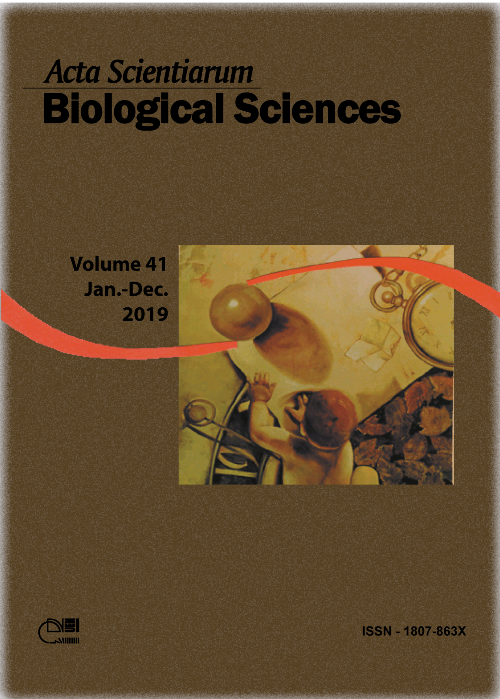The context of the size and distance of Atlantic Forest fragments in a small city in Southern Brazil
Resumo
The Atlantic Forest is highly anthropized, this reduce the areas of native vegetation and impacts the biodiversity of the biome. The objective of this study is to analyze forest remnants with native vegetation characteristics using a free GIS. This analysis takes place using landscape metrics and was based on the supervised vectorization of land use in the municipality of California, PR. The area of the vectored polygons was obtained and a classified, and then the calculation was made with the nearest neighbor index, mean distance observed, Patton diversity index and the perimeter/area ratio of forest fragments. The results show that most of the fragments have an area smaller than 1 ha, the fragments with more significant area (<50 ha) represent more than 16% of the native vegetation area. The small fragments are important to maintain the connectivity, since the withdrawal of these increases the mean distance observed and nearest neighbor index. Most of the fragments are elongated and amorphous in accordance with the perimeter/area ratio and the Patton diversity index respectively, this may demonstrate the fragments may be subject to edge effects. Even with these characteristics, these fragments may be part of what is planned in public policy for preservation in the Atlantic Forest in the state of Paraná. Therefore, even small fragments with little core area are important for maintaining biodiversity, especially in a highly anthropogenic landscape
Downloads
DECLARAÇÃO DE ORIGINALIDADE E DIREITOS AUTORAIS
Declaro que o presente artigo é original, não tendo sido submetido à publicação em qualquer outro periódico nacional ou internacional, quer seja em parte ou em sua totalidade.
Os direitos autorais pertencem exclusivamente aos autores. Os direitos de licenciamento utilizados pelo periódico é a licença Creative Commons Attribution 4.0 (CC BY 4.0): são permitidos o compartilhamento (cópia e distribuição do material em qualqer meio ou formato) e adaptação (remix, transformação e criação de material a partir do conteúdo assim licenciado para quaisquer fins, inclusive comerciais.
Recomenda-se a leitura desse link para maiores informações sobre o tema: fornecimento de créditos e referências de forma correta, entre outros detalhes cruciais para uso adequado do material licenciado.












1.png)




3.png)













